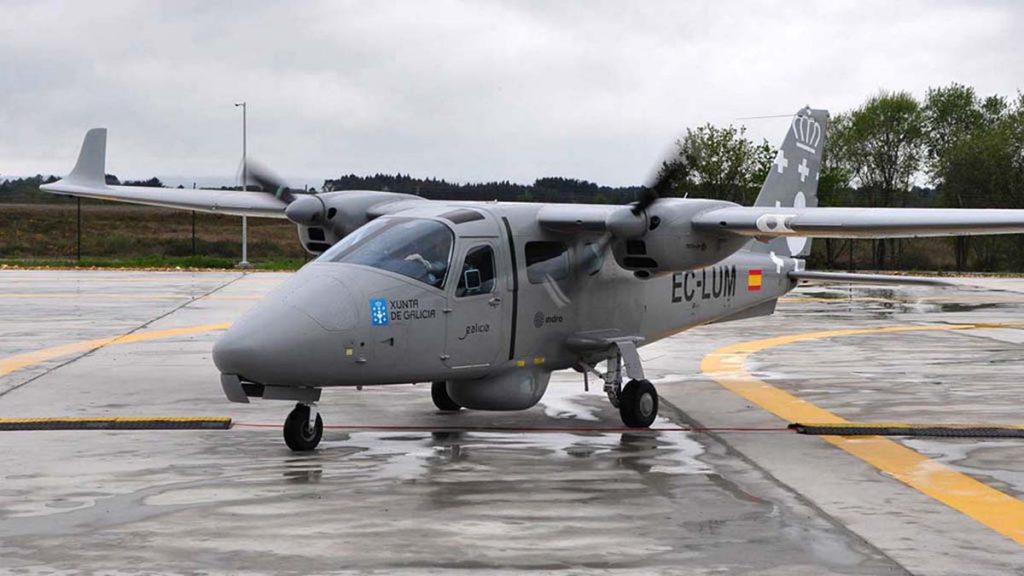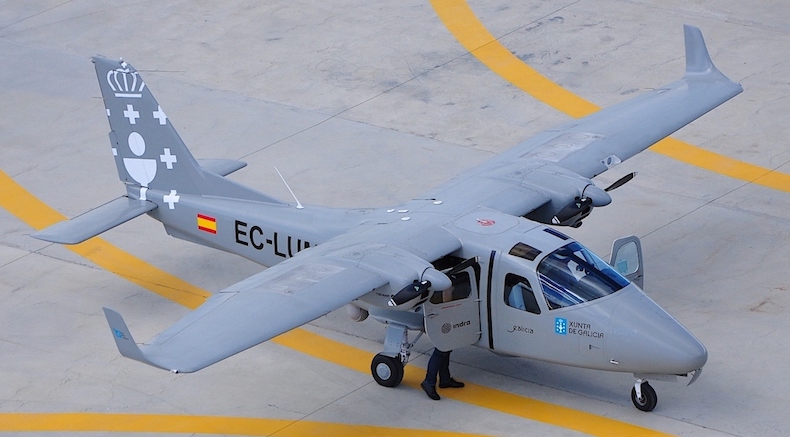Technological advances worldwide have allowed us to know in the second decade of the 21st century systems and devices that twenty years ago would have seemed possible only in cinematography. Today we pay attention to the Targus project, which will be the Optionally Piloted Airplane OPV (Optionally Piloted Vehicle, for its acronym in English), the most advanced that has been developed in Spain.
Contents
Knowing the Project
As the name implies; Targus OPV, is an optionally manned aircraft. This is being developed jointly by Indra and the government of Spain through the “Xunta de Galicia”. Indra is one of the most important companies globally in the development of technologies in specific segments of the transport and defense markets, in Spain and Latin America it is also a leader in the communication technologies sector.
Although the Targus is called an “aircraft”, Indra has specifically classified it as a drone, which is part of the Civil UAV, s Initiative program, headed by the “Xunta de Galicia”. The intention of Civil UAV, s Initiative is to generate innovative solutions that bring public services to the forefront and the way in which they are provided to the general population. The intentions of the “Xunta de Galicia” with the Civil UAV, s Initiative, are key to the development of smart cities as we could see in the Participation of Angel Lovera, CEO of BCDA Aeronautical Solutions in the webinar: Smart Cities 2020.

Targus Features
Indra presents the Targus as a civil drone with the option of being manned, with the highest load capacity and autonomy of its kind. The drone technology is based on an Indra MRI aerial surveillance system, and physically originates from the Tecnam P2006T, a twin-engine aircraft. Targus has 2 modes of operation: the manned mode, where a pilot operates the aircraft in a traditional way, and the RPAS mode, where the aircraft and all its functionalities are operated remotely from a ground base. If you want to read about another remote aeronautical operation system, we invite you to read New remote control tower center in Norway.
Targus OPV is an aircraft with a maximum take-off weight of 1.2 tons, it is prepared for the adaptation of various monitoring systems that allow information to be sent to the ground base in real time. The equipped engine is a Rotax twin-engine 912 S3–100 HP, the configuration is high-wing and retractable gear, with a wingspan of 11 meters.
Expected applications of the Targus
The expected uses of this aircraft are mainly focused for the benefit of society in contingency cases, for example, the Targus is expected to carry out solution operations and / or support in search and rescue missions, fire suppression, monitoring and environmental protection, control and analysis of land use, among others. All these situations, especially those involving danger, can be carried out without exposing the life of a pilot.
The final tests
The tests to verify the functionality and systems of the Targus OPV have been carried out at the Rozas Aerodrome, located in the municipality of Castro Rey, Spain. In the past months of June and July the project successfully completed the tests to verify the remote piloting capacity and to fly autonomously.
All tests are being carried out under the conditions that the EASA (European Agency for Aviation Safety) has stipulated necessary. These tests are being carried out in non-segregated airspace, that is, as if it were an aircraft in common use. This is also a historical fact since these types of flight permits have never before been granted in Spain to a newly developed Unmanned Aerial Vehicle (UAV).
What do you think of this topic? Do you think that in the near future we will see more UAVs?
If you have any doubt or question you can contact us or write your query in the comments section below.
Image of Aerotendencia via pinterest under Creative Commons license.
